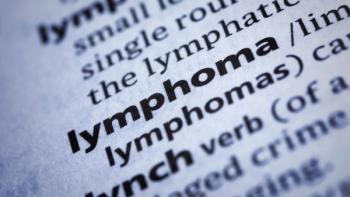
Less Invasive Testing Could Identify Targeted Treatment Options for Patients with Lung Cancer
A new blood test may offer a less invasive alternative to tissue testing when identifying patients with non-small cell lung cancer (NSCLC) who could benefit from certain immunotherapies.
A new blood test may offer a less invasive alternative to tissue testing when identifying patients with non-small cell lung cancer (NSCLC) who could benefit from certain immunotherapies, according to recent research published in Nature Medicine.
Checkpoint inhibitors — immunotherapeutic agents that make T cells more efficient at killing cancer cells – have been found to work better in individuals with specific tumor biomarkers, one of which is tumor mutational burden (the number of cancer cells, the size of a tumor or the amount of cancer in the body). Typically, patients with higher tumor mutational burden are often better candidates for immunotherapy treatment.
However, the biopsy-based tests currently used to identify this biomarker can be slow and invasive. Additionally, in patients with NSCLC, enough tissue may not even exist for a full testing panel, making it a poor diagnostic choice.
“There are patients for whom the biopsy is inadequate from the start, or the tissue is used for routine pathology and we don’t have enough tissue left to do either genomic testing or tissue (is tumor mutational burden),” lead study author David Gandara, M.D., director of the Thoracic Oncology Program at UC Davis Comprehensive Cancer Center, said in a statement.
“If we can do it in blood in one test, that offers many advantages for patients who have had an inadequate biopsy,” he added.
This led a team of researchers from UC Davis Comprehensive Cancer Center, Genentech and Foundation Medicine to examine whether they could assess a patient’s tumor mutational burden level in blood rather than in tissue.
To find this correlation, researchers examined blood samples from more than a thousand patients with advanced NSCLC that took part in the OAK and POPLAR studies. The team then compared the blood samples with existing tumor tissue and found a strong association between tumor mutational burden levels in both blood and tissue, despite the differences between these two materials.
The new blood test is not only fast and minimally-invasive, but it also accurately predicted which patients would benefit from immunotherapy treatment, particularly with Tecentriq (atezolizumab). This could be a viable alternative for the 30 percent of patients with NSCLC who have too little tumor tissue for an accurate biopsy, Gandara said.
“We succeeded, establishing a (tumor mutational burden) level in blood that correlates well with similar levels in tissue and was associated with favorable patient outcomes,” he added.
As such, the test is on track to be used in practice, with Foundation Medicine currently seeking Food and Drug Administration (FDA) approval to add it into their FoundationACT (FACT) liquid biopsy panel, which could happen soon, according to Gandara.
This test has already received a breakthrough designation from the FDA, which is the first step towards a full approval. As Gandara explained, “This is very important for practicing physicians and for patients. What they hear about as research one day could very shortly be standard of care.”




